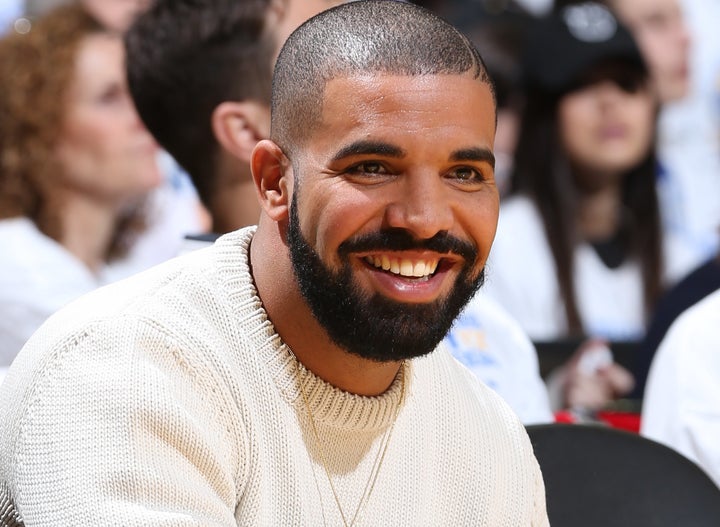Recently, black men in sports, music and film -- like James Harden, Drake and Idris Elba -- have redefined beard style and given an underrepresented group of men the confidence to embrace their facial hair, says Neville Hall, the co-owner of beard care products retailer Bold Beardsmen.
But black men with beards isn't a new trend.
"It's something that speaks to our heritage," says Hall. "The hair on our heads has always been our crown, but growing a beard is a stepping stone to becoming a man."

The skincare needs and problems for black men with beards are unique, however, Hall says men have started taking beard maintenance and grooming more seriously. We asked Hall, a scientist and a board-certified dermatologist to explain the common grooming challenges and share their tips for growing and maintaining a beard.
Trimming your beard is necessary.
"Not trimming the ends of your beard can lead to split ends and unmanageable facial hair," says Hall. "Trimming allows your beard to maintain a chosen shape and an overall clean and healthy look."
If you're strapped for cash and can't afford weekly trips to the barbershop, Hall suggests investing in a beard trimmer and a pair of stainless steel beard trimming scissors to keep the ends of your beard well-groomed and its desired shape intact. We've heard nothing but great reviews about the Bevel Trimmer.
Picking at ingrown hairs is the worst thing you can do.
Black men often have coarse or curly hair, which may lead to razor bumps and ingrown hairs. "People with dark skin tend to react to inflammation, such as that caused by razor bumps, with hyperpigmentation," says Dr. Dina D. Strachan, the director of Aglow Dermatology in New York.
While the derm claims growing a beard is generally protective, waiting too long to address razor bumps is a big mistake: "Damage to hair follicles that occur as a result of untreated razor bumps can make it more challenging to prevent flare-ups," she says.
Clarisonic president and co-founder Robb Akridge, who has a doctorate in microbiology, echoes this advice. He says, "The sad thing is if you're too aggressive trying to take [ingrown hairs] out, you end up with scarring. You're basically trading one problem for another. My advice to those guys is don't pick at it. Go to your dermatologist or aesthetician and figure out how to tackle."
In treating razor bumps, a physician may employ chemical peels or topical retinoids. "A good side effect is that they have anti-aging effects and also help with hyperpigmentation," says Strachan.
Don't neglect the skin underneath your beard.
The old adage "Black don't crack" may be true, but that doesn't mean you get a pass on sticking to a skincare regimen. "Cleaning and exfoliating help treat the hard-to-reach skin under your beard, especially if it's full and lengthy," says Hall.
As a general rule, black men should avoid using products that contain dyes, artificial fragrances and lanolin, as these can cause irritation, dryness and clogged pores. Harsh soaps are also moisture- and oil-stripping culprits. Akridge believes exfoliating cleansers with salicylic acid or fruit acids will help to prevent pores from getting clogged or causing ingrown hairs. A mechanical cleansing brush like the Clarisonic Alpha Fit can be used in conjunction with face wash to lift whiskers up and get rid of dead skin cells, making for a clean and even shave around your beard.
And, of course, don't forget to apply a moisturizer with sunscreen. This is key, no matter your ethnicity!
Build a beard grooming kit with products and tools made specifically for facial hair.
Hall points out another common mistake among bearded men: using the same products they apply to their hair and scalp on their beards. "Most hair products that cater to black men are thick, waxy and often contain chemicals, which can clog pores, cause acne breakouts, and dull complexions," he explains.
Instead, Hall suggests using a gentle cleansing conditioner about one to two times a week in conjunction with regular face washing. Pair it with a beard balm that contains organic ingredients such as shea butter, like the Pomono Beard Balm, to help with manageability of coarse hair. Pro tip: Apply beard oil post-shower when your facial hair is still wet for increase softness and shine.
Once you've gone through your skincare routine, you'll want to give your beard a good comb-through.
"The best choice is to go with more handmade combs that are carefully sawed, polished and move through your beard smoothly," says Hall. Depending on the length of your facial hair, a brush may work best.